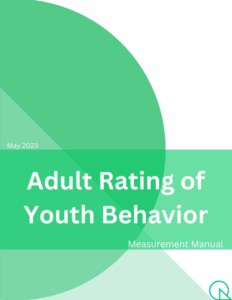QTurn’s Quality-Outcomes Design and Measure (Q-ODM) toolbox includes a comprehensive suite of evidence-informed measures designed to assess the quality and impact of out-of-school time (OST) programs. This manual provides information about an observational rating instrument designed to assess children’s and adolescents’ socio-emotional skills. We also provide some technical information about the measure and general guidance about how to administer, score, and interpret it.
The Adult Rating of Youth Behavior (ARYB) was developed from extensive practitioner input and academic research about the socio-emotional behavior of school-aged children and adolescents1 and the socio-emotional mental skills likely to influence that behavior. It was also designed to help OST program staff (a) think more deeply about how their practices at the point of service influence youth mental skills and the behavioral indicators of those skills and (b) what they can do to learn more about and modify those practices so that they have the intended effects on youth engagement and development.
The ARYB is generally applicable to, and can be used for, any and all types of OST program offerings. The ARYB can also be used with youth classified as having an individualized education program (IEP) or similar designation in the same way you would use it for anyone else. We generally recommend using the ARYB as a primary outcome variable for typical OST program impact studies because we believe that behavioral ratings (as opposed to self-reports) are the most likely to detect socio-emotional skill growth.
Please keep in mind that the ARYB does not provide a clinical assessment of youth. It is intended only for lower-stakes planning, improvement, and program evaluation purposes (e.g., where low scores signal areas of focus and support for youth but not failure, sanctions, or other disciplinary action).
